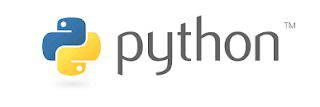Advantage of Python


- Easy Syntax
- Python's syntax is easy to learn, so both non-programmers and programmers can start programming right away.
- Readability
- Python's syntax is very clear, so it is easy to understand program code. (Python is often referred to as "executable pseudo-code" because its syntax mostly follows the conventions used by programmers to outline their ideas without the formal verbosity of code in most programming languages; in other words syntax of Python is almost identical to the simplified "pseudo-code" used by many programmers to prototype and describe their solution to other programmers. Thus Python can be used to prototype and test code
- Python's syntax is very clear, so it is easy to understand program code. (Python is often referred to as "executable pseudo-code" because its syntax mostly follows the conventions used by programmers to outline their ideas without the formal verbosity of code in most programming languages; in other words syntax of Python is almost identical to the simplified "pseudo-code" used by many programmers to prototype and describe their solution to other programmers. Thus Python can be used to prototype and test code which is later to be implemented in other programming languages).
- High-Level Language
- Python looks more like a readable, human language than like a low-level language. This gives you the ability to program at a faster rate than a low-level language will allow you.
- Object oriented programming
- Object-oriented programming allows you to create data structures that can be re-used, which reduces the amount of repetitive work that you'll need to do. Programming languages usually define objects with namespaces, like
classordef, and objects can edit themselves by using keyword, likethisorself. Most modern programming languages are object-oriented (such as Java, C++, and C#) or have support for OOP features (such as Perl version 5 and later). Additionally object-oriented techniques can be used in the design of almost any non-trivial software and implemented in almost any programming or scripting language. (For example a number of Linux kernel features are "objects" which implement their own encapsulation of behavior and data structive via pointers, specifically pointers to functions, in the C programming language). Python's support for object-oriented programming is one of its greatest benefits to new programmers because they will be encountering the same concepts and terminology in their work environment. If you ever decide to switch languages, or use any other for that fact, you'll have a significant chance that you'll be working with object-oriented programming.[1]
- It's Free
- Python is both free and open-source. The Python Software Foundation distributes pre-made binaries that are freely available for use on all major operating systems called CPython. You can get CPython's source-code, too. Plus, you can modify the source code and distribute as allowed by CPython's license. [2] (Luckily, CPython has a permissive free software license attitude.)
- Cross-platform
- Python runs on all major operating systems like Microsoft Windows, Linux, and Mac OS X.
- Widely Supported
- Python has an active support community with many web sites, mailing lists, and USENET "netnews" groups that attract a large number of knowledgeable and helpful contributes.
- It's Safe
- Python doesn't have pointers like other C-based languages, making it much more reliable. Along with that, errors never pass silently unless they're explicitly silenced. This allows you to see and read why the program crashed and where to correct your error.
- Batteries Included
- Python is famous for being the "batteries are included" language.[3] There are over 300 standard library modules which contain modules and classes for a wide variety of programming tasks. For example the standard library contains modules for safely creating temporary files (named or anonymous), mapping files into memory (including use of shared and anonymous memory mappings), spawning and controlling sub-processes, compressing and decompressing files (compatible with gzip or PK-zip) and archives files (such as Unix/Linux "tar"), accessing indexed "DBM" (database) files, interfacing to various graphical user interfaces (such as the TK toolkit and the popular WxWindows multi-platform windowing system), parsing and maintaining CSV (comma-separated values) and ".cfg" or ".ini" configuration files (similar in syntax to the venerable WIN.INI files from MS-DOS and MS-Windows), for sending e-mail, fetching and parsing web pages, etc. It's possible, for example, to create a custom web server in Python using less than a dozen lines of code, and one of the standard libraries, of course.


No comments:
Post a Comment